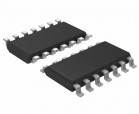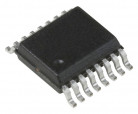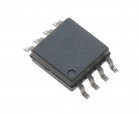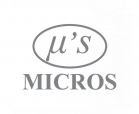CAN/LIN (results: 161)
| Product | Cart |
Additional features
|
Additional operation modes
|
Case
|
Integrated circuit type
|
Maximum bus voltage
|
Manufacturer
|
Transmission speed
|
Supply voltage range
|
Operating temperature (range)
|
|
|---|---|---|---|---|---|---|---|---|---|---|---|
|
TH8056KDC-AAA-008-TU
Enhanced Single Wire CAN Transceiver, 100kbps, 6÷18V, -40÷125°C
|
|||||||||||
|
|
Item available on a request
|
||||||||||
|
TJA1041T
High Speed CAN Transceiver, 1Mbps, 4.75÷5.25V
|
|||||||||||
| Wake-up; High speed | SOP14 | Transceiver CAN | 40V | NXP | 1Mbps | 4,75V~5,25V | -40°C ~ 125°C | ||||
|
|
Item available on a request
|
||||||||||
|
TJA1042T/3 SOP08
High Speed CAN Transceiver w/ Standby Mode & Vio pin, 5Mbps, 4.5÷5.5V, -40÷125°C Zamiennik dla: TJA1042T/3,112, TJA1042T/3,118, TJA1042T/3/1J, TJA1042T/3/CM,118
|
|||||||||||
|
|
Item available on a request
|
||||||||||
|
IL41050TA-1E SSOP16(150MIL) NVE
1Mbps Transceiver QSOP-16-150mil CAN ICs ROHS High-Speed, Low-Power Isolated CAN Transceiver
|
|||||||||||
|
|
Item available on a request
|
||||||||||
|
TJA1051T/3 SOP8 TOKMAS
High Speed CAN Transceiver w/ Vio pin, 5Mbps, 4.5÷5.5V
|
|||||||||||
|
|
Item available on a request
|
||||||||||
|
|
Item in delivery
Estimated time: 2025-04-30
Quantity of pieces: 1
|
||||||||||
|
TLE6250GV33
High Speed CAN Transceiver, 1Mbps, 3÷5.5V, -40÷150°C SP000382100
|
|||||||||||
|
|
Item available on a request
|
||||||||||
|
TLE6255G
Single Wire CAN Transceiver, 33/100kbps, 4kV ESD prot., 5.5÷28V, -40÷125°C SP000012141
|
|||||||||||
| Sleep, Wake-up Call, High Speed | SOP14 | Transceiver CAN | 28V | Infineon Technologies | 100kbps | 5,5V ~ 28V | -40°C ~ 125°C | ||||
|
|
Item available on a request
|
||||||||||
|
TLE7251VSJXUMA1 Infineon
IC TXRX CAN PG-DSO-8
|
|||||||||||
|
|
Item available on a request
|
||||||||||
|
TLE92633BQXV33XUMA2
System Basis Chip Automotive
|
|||||||||||
|
|
Item available on a request
|
||||||||||
|
BIN1044VS-C SOP8
High Speed CAN Transceiver w/ Standby Mode & Vio pin, 5Mbps, 4.5÷5.5V, -40÷125°C Zamiennik dla: TJA1042T/3,112, TJA1042T/3,118, TJA1042T/3/1J, TJA1042T/3/CM,118
|
|||||||||||
|
|
Item available on a request
|
Pin VIO | Standby | SOP08 | Transceiver CAN | 70V | BORN | 5Mbps | 4,5V ~ 5,5V | -40°C ~ 125°C | |
|
|
Item in delivery
Estimated time: 2025-04-30
Quantity of pieces: 500
|
||||||||||
|
BIN1051VS-C SOP18(T/R)2500) RoHS BORN
CAN controller w/ SPI interface; 1/1; 10mA; 1Mb/s; 2,7V~5,5V; -40°C~85°C; Odpowiednik: BIN1051VS-C; ST485EBDR;
|
|||||||||||
|
|
Item available on a request
|
SOP18 | CAN controller | BORN | 1Mbps | 2,7V ~ 5,5V | -40°C ~ 85°C | ||||
|
|
Item in delivery
Estimated time: 2025-04-30
Quantity of pieces: 500
|
||||||||||
CAN/LIN
CAN interface circuits and LIN interface circuits are important components of modern communication systems, used primarily in the automotive industry as well as in industrial automation. Thanks to these circuits, fast and stable data exchange between individual devices is possible, ensuring the reliability and efficiency of the entire system. CAN/LIN circuits are responsible for interference-resistant information transmission, which is particularly important for applications requiring the highest reliability.
What are CAN and LIN interface circuits, and what are they used for?
CAN interface circuits (from the English Controller Area Network) are solutions used wherever fast data exchange and high reliability are crucial. They can be found, among other things, in automotive systems, such as ABS systems, airbags, or engine control. LIN interface circuits (Local Interconnect Network), on the other hand, are a simpler alternative to CAN circuits and are used in less complex systems, such as window control or car air conditioning. In terms of application, these circuits can be divided as follows:
- CAN ICs – they ensure fast and secure data transmission between multiple devices within the system;
- LIN ICs – they are ideal for simpler systems with lower data transmission speed requirements.
In our offer, you will find a wide selection of CAN and LIN interface circuits, which are perfect for the most demanding applications.
How do CAN and LIN transceivers work?
CAN and LIN transceivers (electronic devices that combine transmitter and receiver functions, enabling simultaneous transmission and reception of signals in communication systems) play a key role in the communication process between various devices by converting electrical signals into formats understandable by other system components. Thanks to transceivers, communication systems are able to transmit data reliably and interference-free. CAN ICs are used where high bandwidth and fast synchronization of multiple devices are required. LIN transceivers, on the other hand, work in less demanding systems where simplicity and lower costs are the main goals of system designers.
What should you consider when choosing CAN and LIN interface circuits?
When choosing CAN or LIN interface circuits, it is worth paying attention to the following:
- Bandwidth – always choose the appropriate transmission speed for your application’s requirements;
- Interference resistance – select circuits that will guarantee stability even in harsh conditions;
- System compatibility – ensure that the chosen circuits are compatible with other system components you will be using them with.
We offer the highest quality products, ensuring reliability, interference resistance, and long-lasting performance. Check out our range and choose CAN or LIN ICs suitable for your needs, ensuring stable and secure communication in electronic systems.
